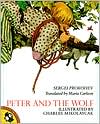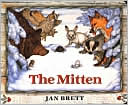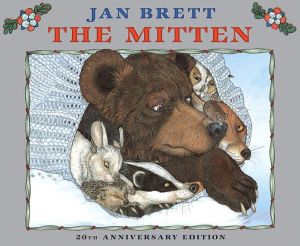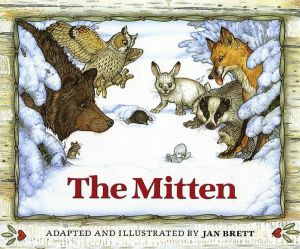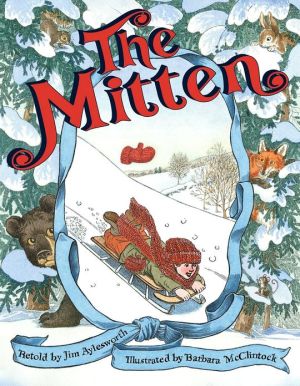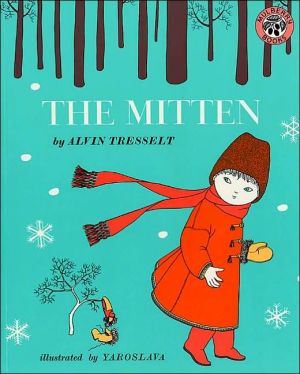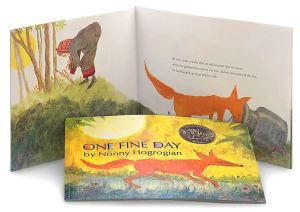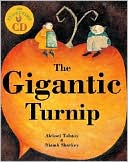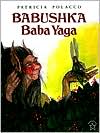Peter and the Wolf
Written in 1936, Sergei Prokofiev's symphonic fairy tale for narrator and orchestra has enchanted generations of children. This inviting picture book introduces a new generation of youngsters to the exciting story of the hungry wolf, the ill-fated duck, the fortunate cat, the fearless little bird, and the brave and cunning Peter, who helps save his friends from the wolf's jaws-and the wolf from the hunters' guns. \ A prolific composer, his works include numerous operas, ballets, and...
Search in google:
Written in 1936, Sergei Prokofiev's symphonic fairy tale for narrator and orchestra has enchanted generations of children. This inviting picture book introduces a new generation of youngsters to the exciting story of the hungry wolf, the ill-fated duck, the fortunate cat, the fearless little bird, and the brave and cunning Peter, who helps save his friends from the wolf's jaws-and the wolf from the hunters' guns. A prolific composer, his works include numerous operas, ballets, and symphonies. Gerlinde Wiencirz was born in Breslau, Germany, and grew up in Bonn. She has worked as a children's book editor and is now a freelance editor and writer. Julia Gukova was born in Moscow, where she now lives with her son. She studied illustration and book design and has illustrated over a dozen books published in Russia. Her first book for North-South was The Blind Fairy, written by Brigitte Schär.Publishers WeeklySince its debut in the '30s, Prokofiev's now-classic orchestral fairy tale of a boy who captures a wolf with the aid of some animal friends has been hugely popular. Here, with a nod to its musical origins (an introductory illustration showing each of the characters with his corresponding instrument), Lemieux ( A Gift from St. Francis ; Voices on the Wind ) delivers a straightforward, tightly written version of the tale. She takes some liberties--the hunters cart the wolf off to the zoo in the end, for example, instead of slitting him open to free the duck he's consumed--and purists may lament the separation of the story from its musical score, but children will still thrill to the bravery of Peter, who ignores his grandfather's warnings and catches a wolf by the tail. Dark, highly stylized oil paintings resound with suitably Russian elements--Grandfather looks like Tolstoy, the hunters are dressed as Cossacks--and create a fittingly atmospheric backdrop to this beloved story. All ages. (Oct.)
\ Publishers Weekly\ - Publisher's Weekly\ Since its debut in the '30s, Prokofiev's now-classic orchestral fairy tale of a boy who captures a wolf with the aid of some animal friends has been hugely popular. Here, with a nod to its musical origins (an introductory illustration showing each of the characters with his corresponding instrument), Lemieux ( A Gift from St. Francis ; Voices on the Wind ) delivers a straightforward, tightly written version of the tale. She takes some liberties--the hunters cart the wolf off to the zoo in the end, for example, instead of slitting him open to free the duck he's consumed--and purists may lament the separation of the story from its musical score, but children will still thrill to the bravery of Peter, who ignores his grandfather's warnings and catches a wolf by the tail. Dark, highly stylized oil paintings resound with suitably Russian elements--Grandfather looks like Tolstoy, the hunters are dressed as Cossacks--and create a fittingly atmospheric backdrop to this beloved story. All ages. (Oct.)\ \ \ \ \ Children's Literature\ - Kristin Harris\ The classic story is set in the great northern woods. Peter lives with his grandfather in a fortress to protect them from the dangers of the woods, specifically the wolf. One morning, Peter plays with the cat, the duck and the bird in the meadow outside the gate. As soon as Peter goes back inside, the wolf appears and goes after the duck. Peter sees it all from the window, and must go back outside and help his friends. They manage to tie up the wolf, just as the hunters come to shoot it. Peter suggests that they take him to the zoo, and that is what they do, via wheelbarrow.\ \ \ Library JournalK-Gr 2-Wiencirz attempts to flesh out the basic story by adding dialogue and description. Unfortunately, rather than adding to the overall impact of the story, this effort only seems to make it more wordy. The clipped sentences sound slightly stilted: "One morning Peter woke up early. He went out into the garden and looked around. Where was his friend the little bird? Peter gave a soft whistle." Compare that passage to Patricia Crampton's Peter and the Wolf (Picture Book Studio, 1987; o.p.): "Only Peter's friend the bird, perched at the top of a big tree, sang the song of the peaceful meadow and the quiet, blue pond." Gukova's illustrations, reminiscent of Eastern European folk art, are more successful than the text. The animals, in particular, are nicely portrayed and seem to have distinct personalities as they interact. The design is basic-a single block of text placed on a double-page painting. Librarians needing a version of this story would be better served by Selina Hastings's Peter and the Wolf (Holt, 1995) or Patricia Crampton's book.-Tim Wadham, Maricopa County Library District, Phoenix, AZ Copyright 1999 Cahners Business Information.\ \ \ \ \ School Library JournalGr 4-8A new interpretation of the often-illustrated tale. Charles Mikolaycak's Peter and the Wolf (Viking, 1986) has realistic colored-pencil drawings of handsome Russian peasants. Jorg Muller's oversized version (Knopf, 1986; o.p.) opens and closes with a theater stage where musicians perform Prokofiev's classic orchestral piece. Ian Beck's toylike figures (Atheneum, 1995) make the tale accessible to younger children. In contrast, Prado's interpretation tells the story in blocks or panels that are dark in hue and heavy with psychological meaning. The hand-written text appears in the corners of the small, framed pictures. Dark night and green forest make it difficult to discern the action as Peter follows the bird, duck, and cat into the frightening forest. Danger is almost palpable as the cat's sharp teeth narrowly miss the bird, and the giant gray wolf emerges from the gloom and swallows the duck. With the bird's help, Peter catches the wolf by his tail and the hunters shoot him. Briefly, the boy feels regret at having destroyed a magnificent beast, but quickly forgets when the villagers admire his bravery. "Vanity is as insatiable as the hunger of wild animals," reads the text. "So it goes." This version is not at all suitable for storyhours because of its dark setting and minute text. The aura of menace and fear that pervades it suggests that it should be used with older children who can understand Peter's pride and rebelliousness and can appreciate the artist's wry, comedic renderings.Shirley Wilton, Ocean County College, Toms River, NJ\ \ \ \ \ Kirkus ReviewsPrado's interpretation of Sergei Prokofiev's tale is a fine combination of raw power and arch simplicity. The story unfolds in comic-book format, with numerous panels to each page, and the artwork within the panels is hyper-evocative of the dark forest, moody and beautifully drafted, the colors rich and royal. Despite his grizzled grandfather's adviceþ"Don't ever go into the forest for any reason, because you'll never come back out"þPeter roves into the woods in the querulous company of a songbird, a duck, and a cat. The wolf, not just ferocious but talismanic of the forest's wild state, materializes and makes quick work of the duck. Peter sets a trap, snares the wolf by the tailþalthough hunters have him in their sightsþand shoots him dead (the duck never makes a reappearance in this version). Peter at first feels a pang of remorse over the noble beast's demise, for it is so necessary a presence in the forest. "But people are fickle. And their vanity is as insatiable as the hunger of wild animals. Peter was no exception. He now only felt the admiration that the entire hamlet expressed over his great feat. So it goes." This book is a winner: dramatic, transporting, and attuned to the value of wildness in nature and how it touches lives irreplaceably. (Picture book. 6-10)\ \
